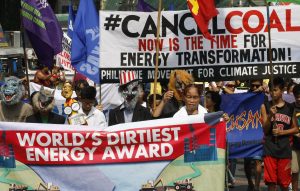Inextricable from discussions of climate change are conversations about energy. Fossil fuels featured heavily in the industrialization and development of the West, and the same is true in the East. As Clare Richardson-Barlow, a Ph.D. candidate in East Asian Studies and the Sustainability Research Institute at the University of Leeds, explains in the interview below, developing countries in Asia have huge potential for sustainable growth but the realities are difficult to balance between day-to-day energy demands and long-term climate concerns. Richardson-Barlow walks us through Asia’s energy quandaries, the implications of cross-border electricity trade, and China’s role as both a top-user of coal and leader in clean energy development.
Asia has immense development needs, and consequently huge energy demands. What energy resources does Asia most rely on?
If we are to look at East Asia as the region, and Northeast Asia (China, Japan, the Koreas, Mongolia, and Taiwan) and Southeast Asia (the 10 member states of the Association of Southeast Asian Nations: Brunei Darussalam, Cambodia, Indonesia, the Lao People’s Democratic Republic, Malaysia, Myanmar, the Philippines, Singapore, Thailand, and Vietnam) as two subregions of East Asia, there are a number of similarities in energy use and trends among East Asian economies.
That being said, patterns in East Asia’s energy use are generally reflective of energy use elsewhere in the world – a historic reliance on traditional hydrocarbons for development, but a lot of potential and interest in growth in renewables and a move away from hydrocarbon fuels. While there is a history of hydropower use across the subregion of Southeast Asia, particularly in the Greater Mekong Subregion, growth in renewable energy use has historically been limited based on economic, geographic, physical, and policy constraints. Northeast Asia is quite widely known for its reliance on coal, gas, and oil; however, there is a lot of investment and interest in diversifying the energy mix in the subregion and among its neighbors. While the broader East Asian region has a history of fossil fuel powered development, the region definitely has a future in renewables and clean energy use.

































